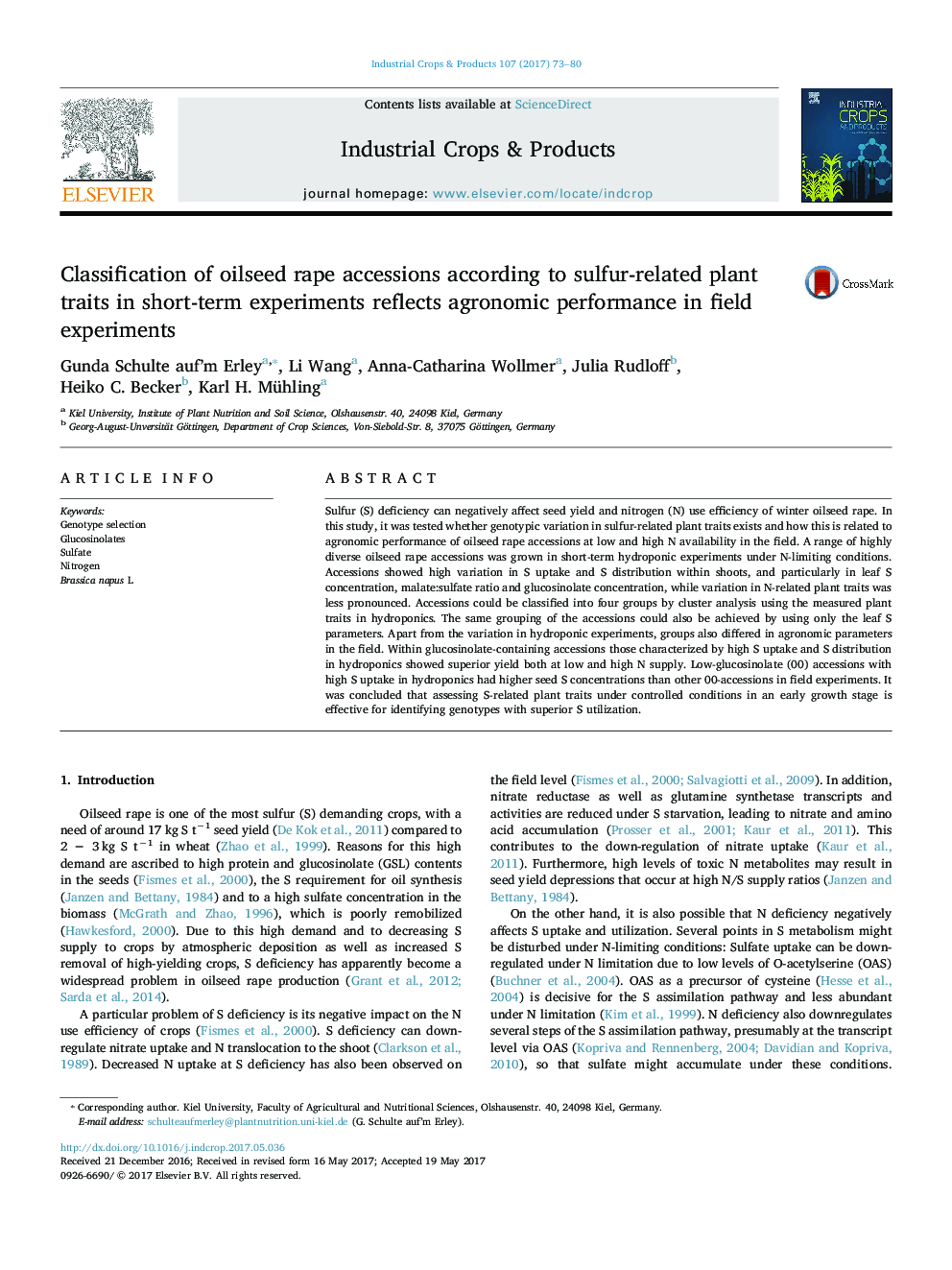| Article ID | Journal | Published Year | Pages | File Type |
|---|---|---|---|---|
| 5762051 | Industrial Crops and Products | 2017 | 8 Pages |
Abstract
Sulfur (S) deficiency can negatively affect seed yield and nitrogen (N) use efficiency of winter oilseed rape. In this study, it was tested whether genotypic variation in sulfur-related plant traits exists and how this is related to agronomic performance of oilseed rape accessions at low and high N availability in the field. A range of highly diverse oilseed rape accessions was grown in short-term hydroponic experiments under N-limiting conditions. Accessions showed high variation in S uptake and S distribution within shoots, and particularly in leaf S concentration, malate:sulfate ratio and glucosinolate concentration, while variation in N-related plant traits was less pronounced. Accessions could be classified into four groups by cluster analysis using the measured plant traits in hydroponics. The same grouping of the accessions could also be achieved by using only the leaf S parameters. Apart from the variation in hydroponic experiments, groups also differed in agronomic parameters in the field. Within glucosinolate-containing accessions those characterized by high S uptake and S distribution in hydroponics showed superior yield both at low and high N supply. Low-glucosinolate (00) accessions with high S uptake in hydroponics had higher seed S concentrations than other 00-accessions in field experiments. It was concluded that assessing S-related plant traits under controlled conditions in an early growth stage is effective for identifying genotypes with superior S utilization.
Related Topics
Life Sciences
Agricultural and Biological Sciences
Agronomy and Crop Science
Authors
Gunda Schulte auf'm Erley, Li Wang, Anna-Catharina Wollmer, Julia Rudloff, Heiko C. Becker, Karl H. Mühling,
